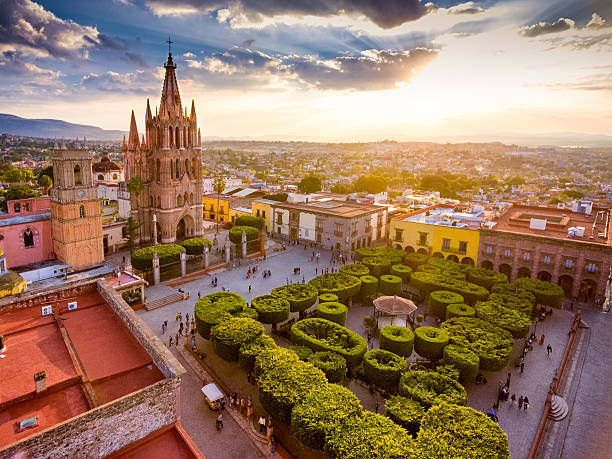Room to Breathe in France’s Alsace Region
- Sean Conway

- Aug 12, 2020
- 4 min read
It was an ambitious trip abroad this summer—a week in Belfast, Northern Ireland for my sister-in-law’s wedding, then almost three weeks of travel that would take us to Paris, Budapest, Vienna, Prague, and finally a pit stop on the way home in Barcelona to see friends. Thankfully, we were experienced enough to know that all those major cities were bound to have a burnout effect on us. So in between our three nights in Paris and three nights in Budapest, we smartly booked three nights in the quaint town of Colmar, France near the German border. We’re getting wise in our old age.
On the way to Colmar from Paris we stopped in Strasbourg. Here, we checked our bags at a hostel for a few hours so we could explore and get lunch. It was the first time we’d done this (there are several companies now who offer this service, often associated with hotels and hostels) but it won’t be our last. Without it, we surely would not have bothered to get off the train—not only would we have had the extra work of dragging our bags along with us, but having them would have been a constant reminder that we were unsettled, between homes, in no-man’s land. Checking them for a few hours gave us the freedom, physically and mentally, to enjoy a city we might have otherwise felt the need to skip.
We loved Strasbourg. It certainly could have made for a nice home base to explore the Alsace region, and in fact I mentioned to Christine that the city could be a great alternative to Paris. Paris has some iconic landmarks to be sure—the Eiffel Tower, the Louvre, Notre Dame—but I wonder if people who head to Paris for the first time, excited to experience an authentic French city, might not be happier in Strasbourg: it’s smaller, less touristy (at least on the afternoon we were there) easy to navigate on foot, and downright beautiful. Canals, cathedrals, half-timbered houses, even an antique carousel. We were sad to leave.
But Colmar didn’t disappoint. Colmar felt like an equally-beautiful suburb of Strasbourg. We rented a renovated apartment for three nights, and the owners smartly kept the original, centuries-old floorboards. The walk up the stairs, or a middle-of-the-night bathroom run, was impossible to do with any kind of stealth, a symphony of squeaks and creaks erupting into the night. The place felt luxurious and authentic at the same time.
Just outside the window, we could hear the bustle of pedestrians, and music, the town pulsing with life. Late at night, with the sun and the German tourists retreated, it could feel downright sleepy. Which is exactly what we loved.
One morning we rented a little white Fiat with a stick shift so we could explore the valley. Called the Route de Vin (wine route) it’s a collection of mostly quiet back roads that connect Colmar in the south to Strasbourg in the north, the route dotted with picturesque village after village, each a hybrid of French and German influences, being so close to the German border. In fact, over the centuries, this area has swapped sides repeatedly, as the border has shifted several miles east or west as deals are made and lines divided. There are about a dozen or more towns dotting the region, but we settled on three that day: Riquewihr, Kaysersberg, and Equisheim. In each we meandered quiet streets, window shopped, and took tons of photos. In Riquewihr we sat and had coffee in a small square under a clock tower. In Kaysersberg we bought wieners from a cart and sat on an old stone wall along a gentle river. And in Equisheim we bought a sleeve of macarons and noticed the large storks that populated the skyline—living in huge nests crowning chimneys and rooftops.
But the highlight of the day—pretty as each of those villages were—had to be the actual driving from one to the next. The landscape is vast, green, and lush, sloping hills disappearing nearly to the vanishing point, endless rows of grapevines, the smells clean and sweet, little traffic anywhere. I’d never driven in Europe before, so this was a great introduction. No busy cities, no intimidating autobahn—just leisurely ragged roads knitting the French countryside. I grew up driving a stick (my first four or five cars were manual transmissions) but hadn’t driven one in years. I had fun shifting, the gears smooth and easy, and somehow I felt more connected to my surroundings, less a spectator and more participant. For the first time in eight trips abroad, I wasn’t looking at the landscape through a train window or from the back seat of a cab. We were navigating the landscape ourselves, just the two of us. There’s an expression all over the internet—it’s on T-shirts and pillows, or can be found on memes shared on social media: be a traveler not a tourist. It’s not necessarily an obvious distinction: what separates one from the other? What’s the diff, anyway?
But on this day, working the clutch, muscling the gearshift, the clean French air blowing through the open windows, I think I was figuring it out.



Comments